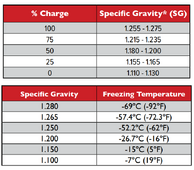It's not that "it may not work", more like it will not work. Take it from someone whom has tried all forms of reconditioning. EDTA, epsom salts, rinse wash and repeat, etc. Once they're sulfated they're dead. The Pakistanis know it which is why they replace the plates and trust me, if there was a more economical and reliable way of doing it that would be the route they would take. As someone else pointed out, the Duralast batteries aren't the greatest to begin with as they're not a real deep cycle battery. I'm all for experimentation though, so have fun!



